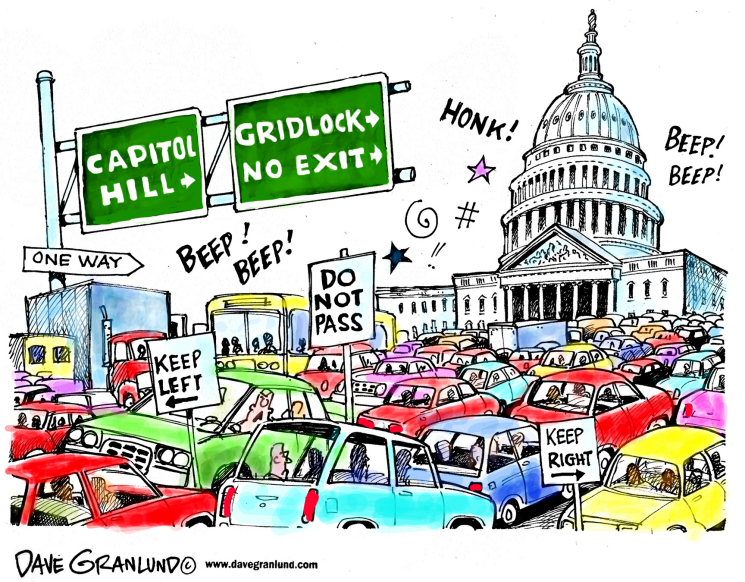| ( ! ) Warning: Attempt to read property "user_nicename" on bool in /home/cwdev/public_html/wp-includes/link-template.php on line 267 |
|---|
| Call Stack |
|---|
| # | Time | Memory | Function | Location |
|---|
| 1 | 0.0000 | 417568 | {main}( ) | .../index.php:0 |
| 2 | 0.0001 | 419056 | require( '/home/cwdev/public_html/wp-blog-header.php ) | .../index.php:17 |
| 3 | 0.3300 | 45538968 | require_once( '/home/cwdev/public_html/wp-includes/template-loader.php ) | .../wp-blog-header.php:19 |
| 4 | 0.3378 | 46053856 | include( '/home/cwdev/public_html/wp-includes/template-canvas.php ) | .../template-loader.php:106 |
| 5 | 0.3378 | 46053856 | get_the_block_template_html( ) | .../template-canvas.php:12 |
| 6 | 0.3380 | 46057232 | do_blocks( $content = '<!-- wp:pattern {"slug":"optimize/single"} /-->' ) | .../block-template.php:291 |
| 7 | 0.3380 | 46058472 | render_block( $parsed_block = ['blockName' => 'core/pattern', 'attrs' => ['slug' => 'optimize/single'], 'innerBlocks' => [], 'innerHTML' => '', 'innerContent' => []] ) | .../blocks.php:2393 |
| 8 | 0.3381 | 46127336 | WP_Block->render( $options = ??? ) | .../blocks.php:2341 |
| 9 | 0.3381 | 46128440 | render_block_core_pattern( $attributes = ['slug' => 'optimize/single'], '', class WP_Block { public $parsed_block = ['blockName' => 'core/pattern', 'attrs' => [...], 'innerBlocks' => [...], 'innerHTML' => '', 'innerContent' => [...]]; public $name = 'core/pattern'; public $block_type = class WP_Block_Type { public $api_version = 3; public $name = 'core/pattern'; public $title = 'Pattern Placeholder'; public $category = 'theme'; public $parent = NULL; public $ancestor = NULL; public $allowed_blocks = NULL; public $icon = NULL; public $description = 'Show a block pattern.'; public $keywords = [...]; public $textdomain = NULL; public $styles = [...]; private $variations = NULL; public $variation_callback = NULL; public $selectors = [...]; public $supports = [...]; public $example = NULL; public $render_callback = 'render_block_core_pattern'; public $attributes = [...]; private $uses_context = [...]; public $provides_context = NULL; public $block_hooks = [...]; public $editor_script_handles = [...]; public $script_handles = [...]; public $view_script_handles = [...]; public $view_script_module_ids = [...]; public $editor_style_handles = [...]; public $style_handles = [...]; public $view_style_handles = [...]; private $deprecated_properties = [...] }; public $context = []; protected $available_context = ['postId' => 799195, 'postType' => 'post']; protected $registry = class WP_Block_Type_Registry { private $registered_block_types = [...] }; public $inner_blocks = []; public $inner_html = ''; public $inner_content = []; public $attributes = ['slug' => 'optimize/single'] } ) | .../class-wp-block.php:586 |
| 10 | 0.3390 | 46153280 | do_blocks( $content = '<!-- wp:template-part {"slug":"header","tagName":"header","className":"site-header","theme":"optimize"} /-->\n\n<!-- wp:group {"tagName":"main","style":{"spacing":{"padding":{"top":"var:preset|spacing|40","bottom":"var:preset|spacing|40"}}},"backgroundColor":"white","layout":{"type":"constrained"}} -->\n<main class="wp-block-group has-white-background-color has-background" style="padding-top:var(--wp--preset--spacing--40);padding-bottom:var(--wp--preset--spacing--40)"><!-- wp:columns {"align":"wide"} -->\n<div '... ) | .../pattern.php:63 |
| 11 | 0.3986 | 46737568 | render_block( $parsed_block = ['blockName' => 'core/group', 'attrs' => ['tagName' => 'main', 'style' => [...], 'backgroundColor' => 'white', 'layout' => [...]], 'innerBlocks' => [0 => [...]], 'innerHTML' => '\n<main class="wp-block-group has-white-background-color has-background" style="padding-top:var(--wp--preset--spacing--40);padding-bottom:var(--wp--preset--spacing--40)"></main>\n', 'innerContent' => [0 => '\n<main class="wp-block-group has-white-background-color has-background" style="padding-top:var(--wp--preset--spacing--40);padding-bottom:var(--wp--preset--spacing--40)">', 1 => NULL, 2 => '</main>\n']] ) | .../blocks.php:2393 |
| 12 | 0.3986 | 46738264 | WP_Block->render( $options = ??? ) | .../blocks.php:2341 |
| 13 | 0.3987 | 46739336 | WP_Block->render( $options = ??? ) | .../class-wp-block.php:566 |
| 14 | 0.3987 | 46740032 | WP_Block->render( $options = ??? ) | .../class-wp-block.php:566 |
| 15 | 0.4216 | 47093512 | WP_Block->render( $options = ??? ) | .../class-wp-block.php:566 |
| 16 | 0.4216 | 47094208 | render_block_core_template_part( $attributes = ['slug' => 'post-navigation', 'theme' => 'optimize'], '', class WP_Block { public $parsed_block = ['blockName' => 'core/template-part', 'attrs' => [...], 'innerBlocks' => [...], 'innerHTML' => '', 'innerContent' => [...]]; public $name = 'core/template-part'; public $block_type = class WP_Block_Type { public $api_version = 3; public $name = 'core/template-part'; public $title = 'Template Part'; public $category = 'theme'; public $parent = NULL; public $ancestor = NULL; public $allowed_blocks = NULL; public $icon = NULL; public $description = 'Edit the different global regions of your site, like the header, footer, sidebar, or create your own.'; public $keywords = [...]; public $textdomain = NULL; public $styles = [...]; private $variations = NULL; public $variation_callback = 'build_template_part_block_variations'; public $selectors = [...]; public $supports = [...]; public $example = NULL; public $render_callback = 'render_block_core_template_part'; public $attributes = [...]; private $uses_context = [...]; public $provides_context = NULL; public $block_hooks = [...]; public $editor_script_handles = [...]; public $script_handles = [...]; public $view_script_handles = [...]; public $view_script_module_ids = [...]; public $editor_style_handles = [...]; public $style_handles = [...]; public $view_style_handles = [...]; private $deprecated_properties = [...] }; public $context = []; protected $available_context = ['postId' => 799195, 'postType' => 'post']; protected $registry = class WP_Block_Type_Registry { private $registered_block_types = [...] }; public $inner_blocks = []; public $inner_html = ''; public $inner_content = []; public $attributes = ['slug' => 'post-navigation', 'theme' => 'optimize'] } ) | .../class-wp-block.php:586 |
| 17 | 0.4235 | 47123032 | do_blocks( $content = '<!-- wp:group {"layout":{"type":"constrained"}} -->\n<div class="wp-block-group"><!-- wp:group {"style":{"spacing":{"padding":{"top":"var:preset|spacing|60","bottom":"var:preset|spacing|60"}}},"layout":{"type":"flex","justifyContent":"space-between","flexWrap":"wrap"}} -->\n<div class="wp-block-group" style="padding-top:var(--wp--preset--spacing--60);padding-bottom:var(--wp--preset--spacing--60)"><!-- wp:post-navigation-link {"type":"previous","showTitle":true,"linkLabel":true,"arrow":"arrow","className":"nou'... ) | .../template-part.php:156 |
| 18 | 0.4235 | 47131800 | render_block( $parsed_block = ['blockName' => 'core/group', 'attrs' => ['layout' => [...]], 'innerBlocks' => [0 => [...]], 'innerHTML' => '\n<div class="wp-block-group"></div>\n', 'innerContent' => [0 => '\n<div class="wp-block-group">', 1 => NULL, 2 => '</div>\n']] ) | .../blocks.php:2393 |
| 19 | 0.4236 | 47132496 | WP_Block->render( $options = ??? ) | .../blocks.php:2341 |
| 20 | 0.4236 | 47133568 | WP_Block->render( $options = ??? ) | .../class-wp-block.php:566 |
| 21 | 0.4262 | 47251776 | WP_Block->render( $options = ??? ) | .../class-wp-block.php:566 |
| 22 | 0.4262 | 47252848 | render_block_core_post_navigation_link( $attributes = ['showTitle' => TRUE, 'linkLabel' => TRUE, 'arrow' => 'arrow', 'className' => 'nounderline', 'fontSize' => 'small', 'type' => 'next', 'taxonomy' => ''], $content = '', class WP_Block { public $parsed_block = ['blockName' => 'core/post-navigation-link', 'attrs' => [...], 'innerBlocks' => [...], 'innerHTML' => '', 'innerContent' => [...], 'parentLayout' => [...]]; public $name = 'core/post-navigation-link'; public $block_type = class WP_Block_Type { public $api_version = 3; public $name = 'core/post-navigation-link'; public $title = 'Post Navigation Link'; public $category = 'theme'; public $parent = NULL; public $ancestor = NULL; public $allowed_blocks = NULL; public $icon = NULL; public $description = 'Displays the next or previous post link that is adjacent to the current post.'; public $keywords = [...]; public $textdomain = NULL; public $styles = [...]; private $variations = NULL; public $variation_callback = NULL; public $selectors = [...]; public $supports = [...]; public $example = NULL; public $render_callback = 'render_block_core_post_navigation_link'; public $attributes = [...]; private $uses_context = [...]; public $provides_context = NULL; public $block_hooks = [...]; public $editor_script_handles = [...]; public $script_handles = [...]; public $view_script_handles = [...]; public $view_script_module_ids = [...]; public $editor_style_handles = [...]; public $style_handles = [...]; public $view_style_handles = [...]; private $deprecated_properties = [...] }; public $context = ['postType' => 'post']; protected $available_context = ['postId' => 799195, 'postType' => 'post']; protected $registry = class WP_Block_Type_Registry { private $registered_block_types = [...] }; public $inner_blocks = []; public $inner_html = ''; public $inner_content = []; public $attributes = ['showTitle' => TRUE, 'linkLabel' => TRUE, 'arrow' => 'arrow', 'className' => 'nounderline', 'fontSize' => 'small', 'type' => 'next', 'taxonomy' => ''] } ) | .../class-wp-block.php:586 |
| 23 | 0.4264 | 47253560 | get_next_post_link( $format = '%link<span class="wp-block-post-navigation-link__arrow-next is-arrow-arrow" aria-hidden="true">→</span>', $link = '<span class="post-navigation-link__label">Next:</span> <span class="post-navigation-link__title">%title</span>', $in_same_term = ???, $excluded_terms = ???, $taxonomy = ??? ) | .../post-navigation-link.php:116 |
| 24 | 0.4264 | 47253560 | get_adjacent_post_link( $format = '%link<span class="wp-block-post-navigation-link__arrow-next is-arrow-arrow" aria-hidden="true">→</span>', $link = '<span class="post-navigation-link__label">Next:</span> <span class="post-navigation-link__title">%title</span>', $in_same_term = FALSE, $excluded_terms = '', $previous = FALSE, $taxonomy = 'category' ) | .../link-template.php:2296 |
| 25 | 0.4273 | 47274080 | get_permalink( $post = class WP_Post { public $ID = 799308; public $post_author = '171'; public $post_date = '2018-07-26 12:01:12'; public $post_date_gmt = '2018-07-26 20:01:12'; public $post_content = '\n\t\t\t\t<div><img src="https://image.cagle.com/213360/745/213360.png" style="width: 100%" /></div>In his infamous marathon testimony before the Senate Intelligence Committee in June 2017, former FBI Director James Comey quipped "Lordy, I hope there are tapes." \n\nThose tapes - which President Donald Trump implied that he had made of his conversations with Comey - never did surface. But this week, a perhaps equally explosive one did when the lawyer of former Trump personal attorney Michael Cohen shared a recordi'...; public $post_title = 'Lordy, There Are Tapes'; public $post_excerpt = '\n\t\t\t\tIn his infamous marathon testimony before the Senate Intelligence Committee in June 2017, former FBI Director James Comey quipped "Lordy, I hope there are tapes." \n\nThose tapes - which President Donald Trump implied that he had made of his conversati...\t\t'; public $post_status = 'publish'; public $comment_status = 'open'; public $ping_status = 'open'; public $post_password = ''; public $post_name = 'lordy-there-are-tapes'; public $to_ping = ''; public $pinged = ''; public $post_modified = '2018-07-26 12:01:12'; public $post_modified_gmt = '2018-07-26 20:01:12'; public $post_content_filtered = ''; public $post_parent = 0; public $guid = 'http://www.caglecartoons.com/column.asp?columnID=%7B3B43ECF5%2D89E9%2D463F%2D8625%2D1CEF10EF875C%7D'; public $menu_order = 0; public $post_type = 'post'; public $post_mime_type = ''; public $comment_count = '1'; public $filter = 'raw' }, $leavename = ??? ) | .../link-template.php:2358 |


Leave a Reply